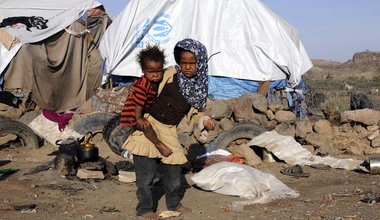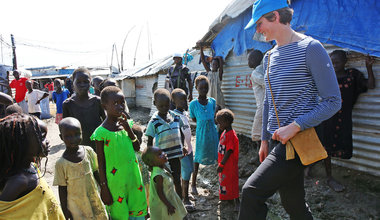Fleeing violence in Horn of Africa, asylum-seekers find little safety in Yemen – UN refugee agency
 Highlighting a dramatic increase in sea crossings by migrants and refugees from the Horn of Africa to Yemen – which itself is reeling under a deteriorating humanitarian crisis, the United Nations refugee agency today called for urgent steps to deter and save people from the deadly risks they are taking.
Highlighting a dramatic increase in sea crossings by migrants and refugees from the Horn of Africa to Yemen – which itself is reeling under a deteriorating humanitarian crisis, the United Nations refugee agency today called for urgent steps to deter and save people from the deadly risks they are taking.
According to the Office of the UN High Commissioner for Refugees (UNHCR), as of mid-November, some 105,971 people – migrants, asylum-seekers and refugees – mostly from Ethiopia (88,667) and Somalia (17,293) crossed the Gulf of Aden only to arrive in lands where they face conflict, abuse and exploitation. Women and children are at particular risk of sexual violence and human trafficking.
This year’s crossing (105,971) to Yemen is 14 per cent more than 2015 (92,446) and more than four-times the number in 2006 (25,898)
“Many of those making the crossing may be deceived or ill-informed about the severity of the conflict in Yemen or hope to reach the Gulf States, rather than stay in poverty or face persecution and insecurity at home,” William Spindler, a spokesperson for the agency told the regular bi-weekly press briefing in Geneva today.
“For new arrivals seeking international protection, access to asylum systems in Yemen is restricted and individuals may be unable to register their applications or have their presence documented by the authorities in-the country,” noted Mr. Spindler, explaining the additional challenges.
Yemen has historically been a country of migration and transit for those fleeing violence and persecution from the Horn of Africa to the Arabian Peninsula and beyond. However, after 20 months of conflict, the situation in the country is highly precarious and new arrivals and locals alike face risks of hardship, danger and death.
Reportedly, some people intend to reach Europe as their final destination, departing from Yemen to Sudan, then onwards by road to Libya or Egypt to cross by sea to Europe.
The strife has resulted in displacement of at least 3.1 million individuals, of whom, 2.1 million still remain displaced, and more than 80 per cent of the population is in need of humanitarian assistance. The prolonged conflict and insecurity has also led to the proliferation of trafficking and extortion networks targeting new arrivals.
“All this makes Yemen ill-equipped to receive and host new refugees and migrants or those seeking to transit,” underscored the UNHCR spokesperson, adding that the agency plans to launch a regional information campaign in countries of origin and transit, including Ethiopia and Somalia, warning of the dangers and risks inherent in crossings to and arrival in Yemen.
Mr. Spindler also told the media that the agency’s operations in Yemen and the Horn of Africa remain “critically underfunded.”
“Despite massive humanitarian needs and ongoing displacement, our response to the situation in Yemen and neighbouring countries for 2016 remains only 44 per cent funded ($75 million),” he said.
 UN
UN







